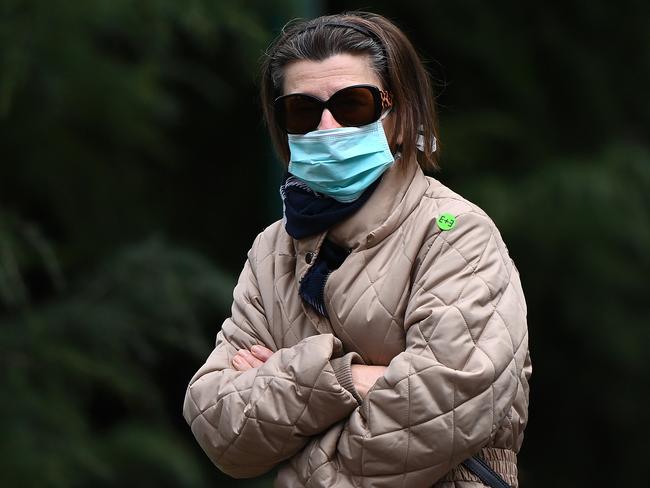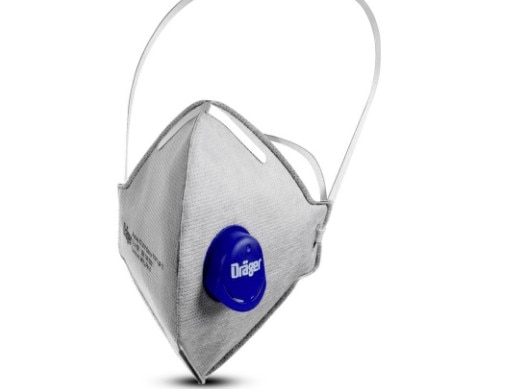Face masks: Everything you need to know
From whether or not you need to wear a face mask to which style offers the best protection, here’s everything you need to know about how they can keep you safe from the deadly coronavirus.
With a second wave of coronavirus infections in Victoria and outbreaks in NSW, there is renewed interest around whether face masks can help prevent COVID-19 transmissions.
From whether disposable or reusable cloth masks are more effective, to where you’re best to buy a facial covering, here’s everything you need to know:
DO I NEED TO WEAR A FACE MASK?
From midnight tonight, anyone aged 12 or over who is living in Greater Melbourne or the Mitchell Shire is required to wear a face mask - or another type of facial covering such as a bandana or scarf - when leaving the house after the Victorian Government mandated their use.
The Victorian Department of Health and Human Services states there are a number of situations where you would not have to wear face covering outside your home, such as if you were jogging or running. A complete list can be found here.
Students aged 12 or over will also be required to don face masks, however, teachers are not required to wear one.
However, both students and teachers will need to wear a mask on the way to and from school.

Face masks are not compulsory in NSW, but they are recommended if you find yourself in a situation where you are not able to socially distance properly.
“If you happen to be in a situation where people aren’t respecting social distancing, where you do experience crowding, of course, you should wear a mask,” NSW Premier Gladys Berejiklian said.
“It’s not just related to public transport, it’s related to any situation - if you feel you’re going to be in a situation where people around you or yourself aren’t going to be able to respect the social distancing requirements, then you should be wearing a mask and that’s been the consistent advice from day one.”
The federal Department of Health echoes the face mask advice provided for NSW. You can see what the Department recommends here.
DISPOSABLE VS REUSABLE FACE MASKS: WHICH IS BETTER?
Associate Professor Philip Russo, the Director of Cabrini Monash University Department of Nursing research, said surgical masks “work well” if they are fitted correctly.
Associate Prof Russo said the masks provided a physical barrier from someone who could be spraying infected droplets when they cough or sneeze.
He said the surgical masks were effective up until they became damp, at which point they should be disposed of or changed over.
Reusable cloth masks were effective too, he said.
“Either will be as good as the other. It will depend on personal preference”,” Associate Prof Russo said.
He said reusable masks were also less effective when they became damp, and added they should be washed daily.
Associate Prof Russo said facial coverings were not a complete solution to preventing coronavirus transmissions.
He said it remained important to physically distance and maintain proper hand hygiene.

AND WHAT ABOUT THOSE N95 MASKS?
Associate Prof Russo said N95 masks should be reserved for healthcare workers.
He said this variety of mask helped prevent against airborne infections, whereas the coronavirus spread via larger droplets.
Despite recent reports that coronavirus is airborne, Associate Prof Russo said transmission via droplets made up the majority of cases.
“There could be cases where it has been spread by the airborne route, but that’s based on lots of experimental studies that have found the virus in particles in the air. That doesn’t necessarily mean it’s going to cause an infection,” he said.
“What we do know from all the cases that we’ve seen, the epidemiology tells us that it’s those people who have close contact (with someone who is infected) are the ones who get the infection, which always points to the fact that it’s droplets spread.
“There may be some element of airborne spread, but it’s a tiny, tiny proportion if it exists at all.”

ARE SCARVES OR BANDANAS EFFECTIVE?
A recent study by Florida Atlantic University published in the journal Physics of Fluids found a folded handkerchief and single-layer, bandana-style covering did not work well.
Epidemiologist Dr Abrar Ahmad Chughtai from UNSW recently said these types of face coverings should be used as a last resort.
“But with many cases of COVID-19 arising without symptoms, a bandana or scarf may provide some protection and prevent spread of infection from sick people,” Dr Chughtai said.
WHAT IS THE SAFEST AND MOST EFFECTIVE WAY TO USE A FACE MASK?
If you a wearing a reusable mask, the World Health Organisation recommends:
- Clean your hands before touching the mask
- Adjust the mask to your face without leaving any gaps on the sides
- Cover your mouth, nose and chin
- Avoid touching the mask
- Clean your hands before removing the mask
- Remove the mask by the straps behind the ears or head
- Pull the mask away from your face
- Store the mask in a clean plastic, resealable bag if it is not dirty or wet and you plan to reuse it
- Remove the mask by the straps and take it out of the bag
- Wash the mask in soap or detergent, preferably with hot water, at least once a day
- Clean your hands after removing the mask
If you are wearing a surgical mask, the World Health Organisation recommends:
- Wash your hand before touching the mask
- Inspect the mask for tears or holes
- Find the top side where the metal part or stiff edge is
- Ensure the coloured-side faces outwards
- Place the metal piece or stiff edge over your nose
- Cover your mouth, nose and chin
- Adjust the mask to your face without leaving gaps on the side
- Avoid touching the mask
- Remove the mask from behind the ears or head
- Keep the mask away from you and surfaces while removing it
- Discard the mask immediately after use preferably into a closed bit
- Wash your hands after discarding the mask
Remember to always check the directions provided by the manufacturer of your face mask.
WHERE CAN I BUY A MASK?
The Herald Sun has compiled a helpful guide on where you can buy a face mask.
Stores include Masks For Mates, Australian Face Mask, ASOS, BooHoo and The Iconic.
You can find the complete list here.
CAN I MAKE MY OWN FACE MASK?
Many retailers are racing to replenish their face mask stocks after a surge in purchases, so a DIY facial covering might be quicker than waiting for a delivery.
A recent study found homemade masks made from quilted fabric were the DIY option that provided the best protection from coronavirus.
The World Health Organisation has also issued guidelines on masks and recommends:
- Masks should have at least three layers of fabric.
- The inner layer that touches the face should be made of absorbent material, like cotton.
- The middle layer should be made of a non-woven material like polypropylene.
- The outer layer should be made of a non-absorbent material like polyester or a polyester blend.
- The edges of the mask must fit closely to the face and not shift when speaking.
- Avoid face masks made from stretchy fabric or gauze or silk they are only 3 per cent efficient at filtering droplets.
You can find out more here.
